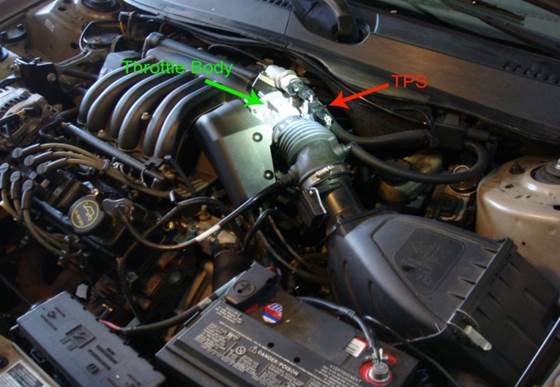What is a Throttle Position Sensor?
The Throttle Position Sensor (TPS) tells your car’s computer how far you are pressing the gas pedal. The car’s throttle is an opening to the engine that opens or closes based on how much air the engine needs. The more you step on the gas pedal, the more air an engine needs to breath in, and therefore the throttle opens accordingly. The TPS sensor reads the position of the throttle to help determine the amount of fuel that needs to be delivered to the engine.
The perfect gift for any auto enthusiast: A gift certificate from Tire Rack.
What happens if the sensor is defective?
There are numerous issues that can result from a defective TPS. These symptoms can range from rolling-idle, engine stalling, a no-start condition, rich (heavy fuel) or lean (low amounts of fuel) conditions, higher than normal emissions, erratic acceleration, to poor shifting performance in an automatic transmission.
How much does the sensor cost?
Sensors range from several hundred dollars to $27.30 on Amazon. You can check for pricing on other online parts stores like Auto Parts Warehouse.
How the Sensor Works:
A TPS is a simple electronic device called a potentiometer. To better understand how to diagnose a TPS, we need to learn how a potentiometer works. A potentiometer is a variable resistor connected to a dial, and it provides a voltage value based on the position of the dial. The image below shows a basic drawing of a potentiometer.
Connection A: Voltage Reference
In your car, this is typically 5 volts. When a car’s computer is expecting a signal from a sensor, it has to know the range (maximum and minimum). Close to 0 volts is normally the minimum, and 5 volts is typically the maximum. As an example, when a car’s computer reads 2.5 volts from the TPS, it may mean the throttle is opened by 50% (your foot is pushing the pedal half-way down). This would also mean that close to 0 volts would mean the throttle is not opened, and at near 5 volts the throttle is wide-open.
Connection W: Signal
This is a “short-cut” for electricity to flow. Electricity is lazy, and it will always take the path of least resistance. Instead of electricity flowing all the way around the rest of the resistor, it finds a short-cut through Connection B. This is the signal to the computer. This a voltage signal that varies due to the amount of resistance involved. The more the resistance (the more the dial turns clock-wise in the picture above) in the path of electricity, the more voltage is consumed, and therefore voltage is less.
Connection B: Ground
In order for any circuit to work, there must be a ground source. This completes the path for the electrical current to flow.

Automotive Throttle Position Sensor
by
Tags:

Leave a Reply